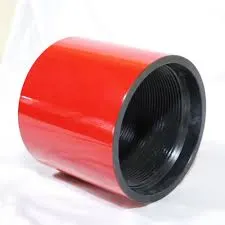- Afrikaans
- Albanian
- Amharic
- Arabic
- Armenian
- Azerbaijani
- Basque
- Belarusian
- Bengali
- Bosnian
- Bulgarian
- Catalan
- Cebuano
- Corsican
- Croatian
- Czech
- Danish
- Dutch
- English
- Esperanto
- Estonian
- Finnish
- French
- Frisian
- Galician
- Georgian
- German
- Greek
- Gujarati
- Haitian Creole
- hausa
- hawaiian
- Hebrew
- Hindi
- Miao
- Hungarian
- Icelandic
- igbo
- Indonesian
- irish
- Italian
- Japanese
- Javanese
- Kannada
- kazakh
- Khmer
- Rwandese
- Korean
- Kurdish
- Kyrgyz
- Lao
- Latin
- Latvian
- Lithuanian
- Luxembourgish
- Macedonian
- Malgashi
- Malay
- Malayalam
- Maltese
- Maori
- Marathi
- Mongolian
- Myanmar
- Nepali
- Norwegian
- Norwegian
- Occitan
- Pashto
- Persian
- Polish
- Portuguese
- Punjabi
- Romanian
- Russian
- Samoan
- Scottish Gaelic
- Serbian
- Sesotho
- Shona
- Sindhi
- Sinhala
- Slovak
- Slovenian
- Somali
- Spanish
- Sundanese
- Swahili
- Swedish
- Tagalog
- Tajik
- Tamil
- Tatar
- Telugu
- Thai
- Turkish
- Turkmen
- Ukrainian
- Urdu
- Uighur
- Uzbek
- Vietnamese
- Welsh
- Bantu
- Yiddish
- Yoruba
- Zulu
seating nipple in tubing
Understanding Seating Nipple in Tubing
Seating nipples play a crucial role in the context of tubing, particularly in the oil and gas industry. These essential components serve as a temporary anchor point for the tubing string, ensuring the proper deployment and retrieval of equipment within wells. Their design and functionality are significant factors that contribute to the efficiency and safety of operations in various drilling and completion activities.
What Is a Seating Nipple?
A seating nipple is a specialized device installed in the tubing string of a well. It is designed to provide a secure location for downhole tools, such as packers or plugs, to land and seal effectively. The seating nipple features a specific profile that allows tools to seat properly, creating a mechanical lock that holds the tool in place. This feature is vital for operations that require the tool to withstand high pressures or to maintain a seal against formation fluids.
Types of Seating Nipples
There are several types of seating nipples, each fitting different operational needs. Common variants include
1. Integral Seating Nipples These are built directly into the tubing and offer a seamless design. They are typically used in applications where minimal space is available and where a strong mechanical bond is required.
2. Threaded Seating Nipples These are screw-in types that can be replaced or removed as needed. They provide versatility in operations, allowing for easy maintenance and adaptability to different operational scenarios.
3. Retrievable Seating Nipples Designed for easy retrieval, these nipples allow operators to remove tools from the well without needing to cut or damage the tubing. This feature is beneficial for workovers and other maintenance operations.
seating nipple in tubing

Importance of Seating Nipples
The importance of seating nipples in tubing cannot be overstated. They enhance the efficiency of several operations, such as well completions, hydraulic fracturing, and production testing. By providing a reliable landing zone for various downhole tools, seating nipples minimize the risk of equipment failure or mishaps during critical operations.
Additionally, their role in maintaining pressure integrity ensures that the well remains safe during production. A malfunction at the seating nipple could lead to leaks, which not only threaten the reservoir but also pose environmental risks.
Challenges and Considerations
Despite their advantages, the use of seating nipples does present challenges. The correct selection and installation of these components are vital for successful operations. Engineers must consider factors such as the type of downhole tool, well conditions, and the specific requirements of the operation. Failure to choose the appropriate type of seating nipple can result in operational inefficiencies or equipment failure.
Furthermore, the materials used in manufacturing seating nipples must be resistant to corrosion and wear, given the harsh environments often encountered in wells. Operators should conduct regular inspections to ensure that the seating nipple is in optimal condition, as any wear or damage can compromise its functionality.
Conclusion
In summary, seating nipples are integral components of tubing systems within the oil and gas industry. They facilitate the successful installation and retrieval of downhole tools while ensuring the integrity of the well. Understanding their types, importance, and the challenges associated with them is essential for operators seeking to optimize their operations and reduce risks. As the industry evolves, innovations in seating nipple design and materials will undoubtedly continue to enhance their performance, making them indispensable for modern drilling and completion practices.
-
Tubing Pup Joints: Essential Components for Oil and Gas OperationsNewsJul.10,2025
-
Pup Joints: Essential Components for Reliable Drilling OperationsNewsJul.10,2025
-
Pipe Couplings: Connecting Your World EfficientlyNewsJul.10,2025
-
Mastering Oilfield Operations with Quality Tubing and CasingNewsJul.10,2025
-
High-Quality Casing Couplings for Every NeedNewsJul.10,2025
-
Boost Your Drilling Efficiency with Premium Crossover Tools & Seating NipplesNewsJul.10,2025







